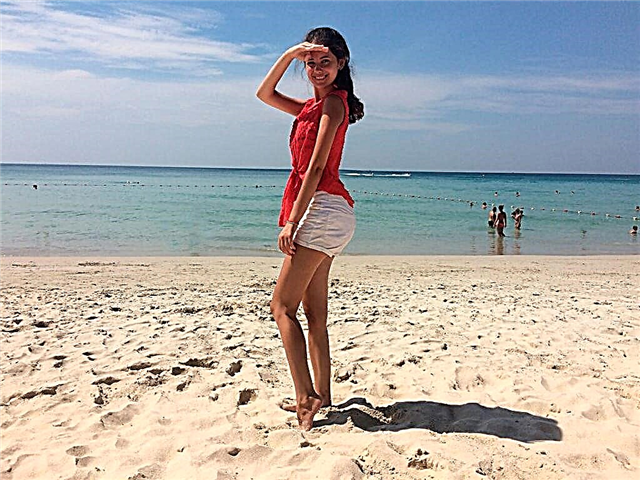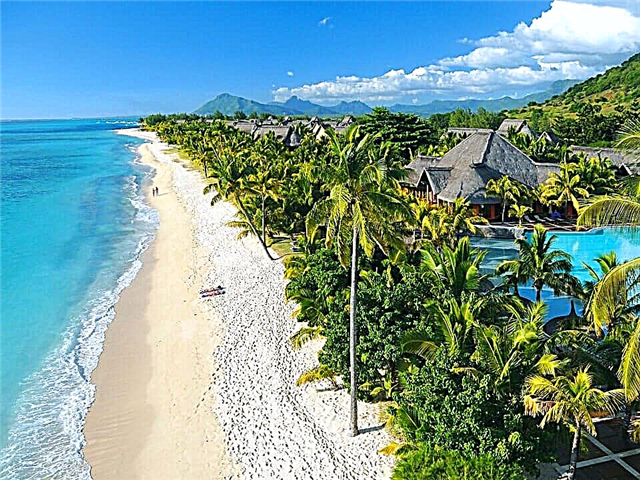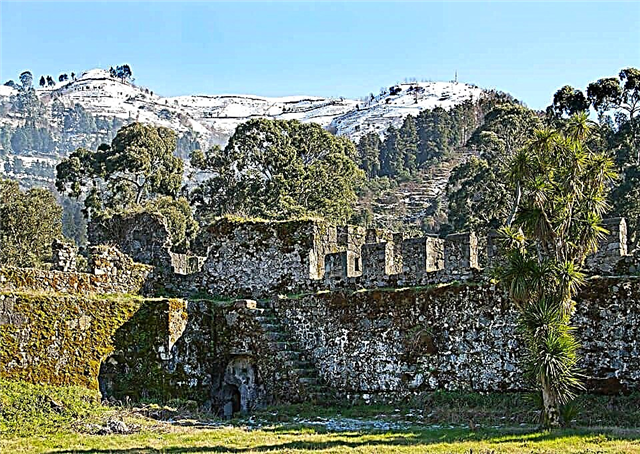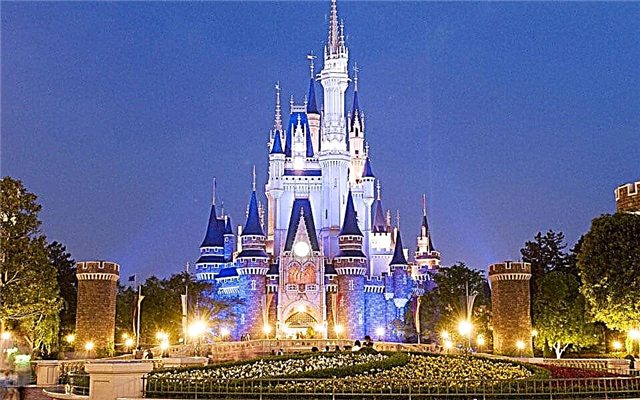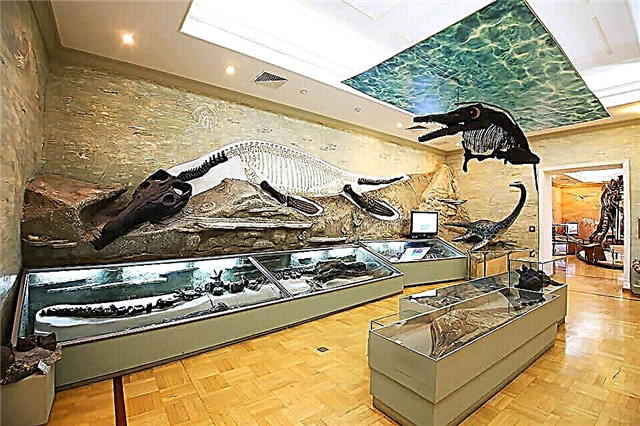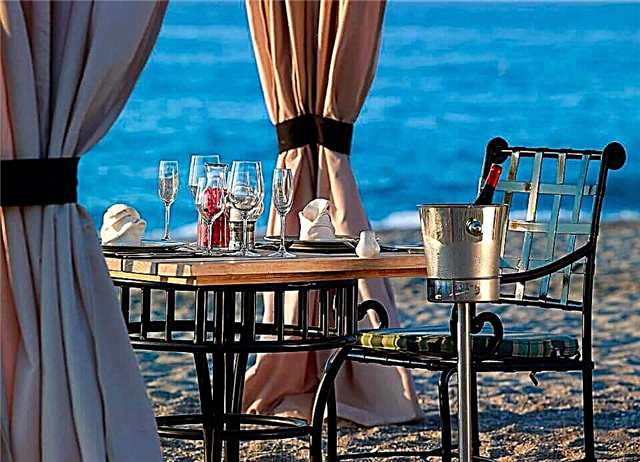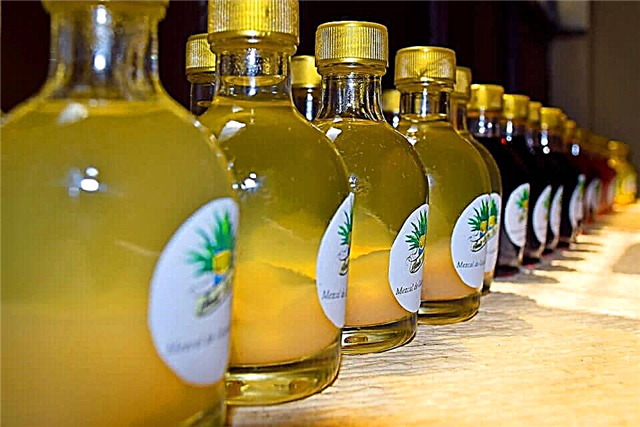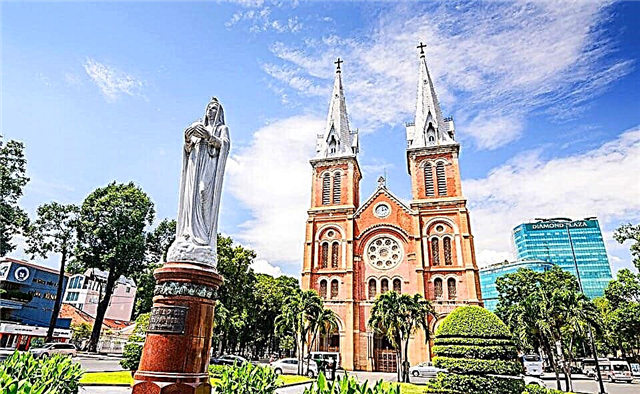The sights of Ho Chi Minh City will take enough time to see them: after all, the city has so many faces. Although not the capital, it is the true soul of Vietnam. Modern buildings do not suppress, but, on the contrary, complement the historical part. Temples of different denominations are perfectly combined with each other, providing tourists in a short time to get acquainted with the culture of the Vietnamese, Chinese, Indians. Traveling around the city and visiting the monuments, guests simultaneously study the history of the country. The colonial era was replaced by the period when the country gained independence, then - the unification of the southern and northern parts. Buildings and monuments from different times are so intricately intertwined that the impression remains vivid and unusual. Paris of the East touches, beckons and invites you to come back again.
Reunification Palace

This unique building is a combination of 2 architectural styles: national and European. It is bordered by an oval lake with giant lotuses and lilies. Nearby there is a lawn, also oval. On the territory there are tennis courts, a gazebo for relaxation, a garden and a grove. Also on display is military equipment that took part in the storming of the palace in 1975. The complex is used for official receptions, but there are free guided tours around the grounds and the building. An audio guide can be borrowed from the information desk.
The history of the Reunification Palace is very interesting:
- It received this name after the end of the war between North and South Vietnam. And the first building on this site was erected in 1873. The building was named Norodom (after the king of Cambodia).
- In March 1945, after the defeat of France, Norodom became part of Japan. But in September 1945, after the defeat of Japan and the victory of the anti-Hitler coalition, the French returned to Norodom.
- In September 1954, the building became the property of Ngo Dinh Diem. By his order, Norodom became the Palace of Independence.
- During the war between the parts of the once united Vietnam, the Palace was badly damaged. They decided to demolish it and build a new one. Work continued from 1962 to 1966.
- In November 1975, a reunification conference was held. It was after her that the building became known as the Reunification Palace.
- In 1976, the building received the status of a national monument, in 2009 - a national relic.
Locals often call the historical monument Dragon's Head, because according to Feng Shui, the building was built on the site of a lizard's head.
Bitexco Financial Tower

This building is built in the form of one of the symbols of the country - the lotus flower. Some petals have already blossomed and are spreading on the ground, others are curled up and are at rest. The height of the building is more than 260 m. The builders managed to create the illusion of a glass structure thanks to the continuous glazing. Inside the tower there are restaurants, cafes, shops (including Adidas and Samsung), a cinema, a food court, an indoor observation deck, and a helipad.
One of the entertainment provided by the tower administration is stair running. Athletes will have to run all marches from the 1st to the 49th floor. Not only residents of Ho Chi Minh City participate, but also foreign tourists. Basically, guests are attracted by the observation deck, from where the whole city can be seen at a glance. To get here, take the high-speed elevator. The ascent takes less than 20 seconds.
The playground itself is very beautiful: there is unusual lighting, it is clean, there are sofas for relaxation. The souvenir shops sell magnets with the tower symbols, calendars, and postcards. On interactive screens, you can find out what attractions are nearby, how to get there. The time spent on the observation tower is not limited: tourists who come here during the day wait for the sunset. Hence, it is unusually bright. And you can while away the time in one of the cafes with a portion of delicious ice cream.
Jade Emperor Pagoda

This is the most elegant and most visited pagoda. Guests are attracted by the graceful architecture, an elegant courtyard with a pool where turtles swim, and unusual rituals that bring visitors good luck. By the way, the second name of the temple is Turtle. The pagoda is working: believers pray here, candles are burning inside. But tourists can enter there, the main thing is not to interfere with those who are praying. It is very cozy in the courtyard of the temple: paths are paved with tiles, flower beds are laid out, trees are planted.
The banyan tree, sacred to Buddhists, grows here. It is famous for the fact that the branches take root easily. The process is going so fast that it is soon impossible to understand where the main trunk is. The legend explains this property of the plant by the fact that the banyan tree was once the tallest in the world. People climbed up to 18 heavens to ask the supreme god for something. But their requests became too selfish, so Ngoc Hoang ordered the tree to travel along the ground, and people should only ask in temples.
The courtyard by the turtle pond is always crowded. Here you can perform rituals:
- make a wish and release a turtle bought at the entrance into the pond (the wish will certainly come true)
- married couples will have to release 2 turtles, on the backs of which write their names (in this case, there should be 1 desire for two)
The interior of the temple is dark due to the fact that light penetrates only through the roof openings, and smoky from smoldering incense and burning candles. Here it is worth visiting the altar of the 5 Buddhas, where believers leave gifts and pray. If time permits, you should go hiking in the halls of the pagoda.
Central post office

The operating post office is also an open-air museum. Here you can call any country on a modern phone from an old booth, buy, write and send a postcard. The building was built in 1891. The author of the project is a French architect.
He managed to combine the colonial style with the traditional oriental:
- forged lattices are doors
- massive columns support the patterned ceiling
- the furniture is elegant, made of wood
- the ceiling is decorated with stucco
- arches serve as window openings
- the floor is paved with colored tiles
- bright frescoes on the walls
Such a whimsical mix of styles leaves no one indifferent. And if you also take into account that the project for the foundation of the building was developed by Eiffel, it becomes clear why tourists study the structure for a long time. It is especially valuable for the Vietnamese that Ho Chi Minh worked here as a 17-year-old boy. This is reminiscent of his portrait right in front of the entrance.
On the sides are 2 maps: one depicting Saigon and the surrounding areas in 1892, the other showing telegraph lines at the same time. For those wishing to continue their journey around the city, the Infocenter offers its services. Here you can get acquainted with the monuments of culture and architecture, find out how to get to them.
Kuti Tunnels

These underground galleries were intended for covert warfare. They were actively used by the Viet Cong in order to deliver surprise attacks on the American military. The invaders responded by spraying defoliants inside the discovered passages. This measure led to the retention and accumulation of soil and groundwater. For the final destruction of the galleries, carpet bombing was carried out.
The tunnels begin near the village of Ku Ti. Their total length exceeds 150 km, premises (food and ammunition depots, living rooms, hospital and kitchens) were located on 3 floors and were connected by narrow corridors. The corridors had exits to the surface, which it was impossible for an uninitiated person to find.
Today the Kuti tunnels are one of the most visited tourist sites. Some of the galleries have been restored, electricity has been installed inside, the passages have been expanded and reinforced. But a large person is unlikely to be able to visit an underground city, and an ordinary person will have a hard time: in some places you will have to squat or crawl.In addition, it is stuffy underground and there is a lack of oxygen.
For those who want to see the tunnels, but are not able to get inside, some rooms have been reconstructed on the ground:
- operating unit
- bedroom with hanging hammocks
- kitchen
- headquarters
The installations are complemented by mock-ups of figures of soldiers and officers. Tourists who wish can participate in the quest: find the entrance to the tunnel under your feet. This is an addictive game where you are invited to find a perfectly disguised loophole. The Kuti Tunnels are a whole tourist complex with a hotel, museum, temple, restaurants, shops and even a paintball spot.
Cathedral of Our Lady of Saigon

Notre Dame de Saigon was built by French colonists in order to bring some of their faith to Indochina. The cathedral was conceived to be huge and elegant in order to amaze the locals and overshadow their temples. Its construction began in 1877. Building materials were supplied from France: colored stained glass windows were made in Chartres, and bricks were made in Marseille. The author of the project was also a French architect: J. Boer. The work lasted for 6 years.
There are 6 bells on the bell towers. Each of them sounds in a certain key: all notes are presented, except for FA. The simultaneous ringing of bells can only be heard on Catholic Christmas. But individually, they sound every day. There is a statue of the Virgin Mary in front of the cathedral. She holds a globe in her hands, and crushes a snake with her feet: a symbol of evil. The height of the sculpture is 4 meters.
The interiors of Notre Dame de Saigon are modest: there are wooden benches for parishioners, the altar is made of white marble and decorated with figures of angels. Everything is very laconic, but the singing of the church choir and the sound of the organ during the service are impressive. The cathedral made of red Marseilles stone is a local attraction: newlyweds of different religions come here after registering a marriage for a photo shoot, tourists come here.
Dam Sen amusement park

This complex is located very conveniently: in the city center. Dam Sen Park is one of the largest in the country. Here you can have a great rest for children and adults. And if there is at least a little free time, it is recommended to visit it.
On the territory of the park there are compactly located:
- playgrounds
- zoo
- aquapark
- attractions of any category of complexity
- restaurants and cafes
- concert venues
The territory is well-groomed: the paths are paved with tiles of different colors, there are benches for visitors to rest, numerous bridges have arches entwined with vines and flowers. The gardens of succulents and stones are very beautiful. It is customary here to take a break from the hustle and bustle and meditate. It is recommended to choose a weekday to visit the water park: it is quite empty, there are no problems with cabins in changing rooms and sun loungers in front of the pools. And you won't have to queue up for the slides.
Tired of riding attractions and hungry, you can take a break in one of the small restaurants. Dishes are offered both Vietnamese and European cuisine. Tourists prefer to dine at the Tew Ta floating restaurant. And you can relax in one of the gazebos entwined with vines.
Suoi Tien Amusement Park

This is an unusual park, where you can not only ride the rides, but also explore Eastern culture. Suoi Tien is located on the site of a farm where pythons were once raised. But in 1992, it was decided to create a complex for returning to national culture. The center opened to visitors in 1995. Today its area is about 50 hectares, but the government of the country plans to expand it.
Here tourists are invited:
- visit a variety of attractions
- study the habits of animals in the zoo
- watch a feature or documentary film in a 4D cinema
- visit a crocodile farm
- see interesting sculptures
- visit one of the operating pagodas
You can just sit and relax on a makeshift bench: a lotus sculpture located in the middle of the lake. From one statue to another, it is customary to cross the walkways. And it is recommended to satisfy your hunger in one of the many restaurants. It serves European and Vietnamese cuisine. By the way, the ticket office at the entrance sells tickets only for the right to visit the park, all other entertainments are paid separately. It is possible to purchase a complex ticket, but it is recommended to check in advance what it is valid for.
Tao Dan Park

This is an amazing place in the city center, it is recommended to visit it for those who are tired of the hustle and bustle. There are no attractions in Tao Dan, but you can just relax in the shade of neat palm trees and lawns. The territory is decorated with sculptures of animals and gods, bridges, turrets, and fragments of walls. There are many climbing plants everywhere. Locals have chosen Tao Dan for exercise and sports.
Amateur bird watchers gather here to watch the birds living on the territory. Ordinary amusement parks work late into the night. But Tao Dan empties immediately after sunset. The townspeople explain this by the fact that at night the ghost of a young man walks here.
Rin Rin Park

This is a place for solitude and meditation. There are no attractions or playgrounds here, but the atmosphere is full of peace and quiet. The garden is part of the Vietnam-Japan long-term friendship and cooperation program. It was designed by Vietnamese Ngo Tian, who lived in the Land of the Rising Sun for a long time. He invested his personal funds here, and Japanese artists, employees of Ngo Tian's company, were actively working on the project. The main idea of the park is the unity of 3 components: stone, fish and plants. Moreover, the beauty of the stone should be 60% natural and only 40% supplemented by humans.
Almost all materials for the garden were brought from Japan:
- stones of different sizes
- bonsai 500 years old
- koe carps
The preparatory work took about 6 years: stones were selected and ground, bonsai were prepared, plants were selected. And the very arrangement of the territory took only six months. Near each stone there is a plate indicating where the decor element was brought from, which master and how much he worked on it. And the center of the composition was a stream falling from the top of the largest stone. Curious fish swim in the water. The territory is a little buried, therefore, while in the garden, you can see only neatly trimmed trees, lawns, a stream and a clear sky. All other items disappear.
Zoo and Botanical Garden

A very pleasant complex to relax from the bustle of the city. It covers an area of more than 20 hectares and is divided into:
- amusement park
- Botanical Garden
- zoo
The zoo is somewhat different from what Europeans are used to: animals are kept in open enclosures surrounded by a steel mesh. And especially dangerous individuals are also fenced with especially durable glass. Guests have the opportunity to see aggressive crocodiles from above: there is a path above the pool with reptiles. The same is located above the habitats of ungulates. Tropical fish settled comfortably in artificial reservoirs.

Many animals are listed in the international Red Book. Scientific work is underway at the zoo: in 2015, a baby of an endangered white Bengal tiger appeared, in 2018 - a wallaby (marsupial mammal). Not so long ago, they began to breed crested argus here. This bird in captivity only breeds at the local zoo. The botanical garden is a natural extension of the zoo.
Some trees and shrubs are planted right next to the enclosures. Plants are placed so that the illusion of a dense forest is created. Many were brought from other countries. Some of the plants can be found on the pages of the international Red Book. There is a small lake on the territory, decorated with animal figurines. And the greenhouse with rare orchids and ferns leaves no one indifferent.
Water Puppet Theater "Golden Dragon"

Performing on the water is an ancient Vietnamese tradition.Back in the 11th century, when agricultural work temporarily stopped, peasants entertained themselves by playing puppet shows. And the stage was flooded rice paddies. The first performance was performed by amateur artists in the north of the country in the Hong Ha River Delta. Today, an ancient tradition is alive: every day in Tao Dan Park I play performances on the water. By the way, the show is so popular that tickets should be booked in advance. Despite the fact that the dolls speak Vietnamese, all viewers easily understand what is at stake.
Affected by the skill of the performers and the dynamism of the plot. The topics of the views are different:
- discussion of the future harvest
- fishing in the river
- ancient legends and tales
- romantic stories
The audience warmly accept the funny and sad stories told by the theater puppeteers. The performance is accompanied by music played by ancient instruments: flutes, drums, zithers, violins and even gongs. The instruments are so cleverly arranged that the acoustics around the water stage are amazing.
By the way, all dolls are also made according to the old technology: first, the master carves a blank out of wood, then paints it and covers it with waterproof varnish. Seamstresses create costumes taking into account the smallest details and character of the character. Visiting the Golden Dragon is a great way to relax and explore the culture and customs.
Vietnam History Museum

The exposition received its first visitors in 1929. Then it was called the Blanchard de la Brosse Museum. And only in 1979 it was renamed the Museum of the History of Vietnam. Today it is an interesting exhibition that tells guests about the life of the peoples of 300,000 years ago, the Mekong Valley and South Vietnam. Some artifacts are especially valuable.
Tourists can see:
- ancient pottery
- mummy
- Buddha sculpture
- household items from the primitive period and later times
- elements of decoration of ancient temples
Artifacts are grouped by historical periods and provided with information plates. It will be interesting for both an ordinary tourist and a person studying the culture of Southeast Asia.
People's Committee building

The author of the project is the Frenchman of Garda, therefore, looking at the building, tourists feel themselves in the center of Europe, and not in Southeast Asia. The house looks a little pretentious, but very beautiful. It is decorated with columns, at the top - stucco molding. Despite the constant heat and humidity, the pink-brown color of the walls looks quite fresh.
From the moment of construction (1908) until independence, the building was the city hall. And then it was transformed into the mayor's office.
The People's Committee was stationed here after the end of the last Indo-Chinese war. It was then that the house received its current name. But there is one more, unofficial: Saigon City Hall. Unfortunately, it is impossible to get inside the building: the city administration is located here. But you should definitely see it: there is a cozy park with ponds and benches nearby, where locals and tourists rest. And couples in love make dates at the bronze statue of the first president: Uncle Ho with his children.
There are many cozy cafes around the People's Committee where you can spend time with a cup of coffee, tea or a snack. The prices here, despite the proximity to the city administration, are quite democratic.
Opera theatre

The opera house was built by the French, so the features of European architecture are easily guessed in its appearance:
- columns
- stucco
- frescoes
- massive entrance staircase
- carved windows
At first glance, you can see that the theater is similar to the Grand Opera in Paris. But unexpected moments are also noticeable: often the staircase plays the role of an impromptu scene. Actors perform on the steps, and the audience settles down below. The theater is beautiful in the evening: the lights turn on, the building seems absolutely unearthly.
The interiors are also impressive: the floor of the first floor is paved with patterned tiles, on the second - parquet, wooden armchairs upholstered in crimson velvet. A staircase with wrought-iron openwork railings leads upstairs. The acoustics are great: you can hear it anywhere in the auditorium. The sound equipment is the most modern, the lighting meets the latest world standards. And the stage turns.
But to see all this, you will need to buy a ticket to the performance. The opera stage plays host to world celebrities, but tourists love the AO show. The performance tells about the life of ordinary modern Vietnamese and their distant ancestors, and acrobats, jugglers, gymnasts, dancers participate in the performance. The color is given by the reciters and theatrical scenes.
Vinh Ngiem Pagoda

Vinh Ngyem was built from 1964 to 1971. The author of the project is Nguyen Ba Lang. The development took into account the needs of the country's Buddhists. Not without the Japan-Vietnam Friendship Association: many materials were brought from Japan. The modern pagoda is ready for the constant reception of pilgrims: there are enough buildings on the territory where visitors settle for the night, dine and meditate. All this is led by the Buddhist community of the city.
The chapel is a seven-tiered stone tower 40 m high. Urns with the ashes of the dead are kept in a separate tower. The bronze bell is impressive. Its diameter is almost 2 m. All buildings are located on the shore of the lake. The architecture of the buildings shows the traditions of Japan. Behind the chapel is a building dedicated to the goddess Sakyamuni and two deities serving her.
Services are held here daily, which can be visited by any tourist. But at the same time, it is important to respect the feelings of believers: women should cover their heads, it is recommended to hide the body with clothes as much as possible. In memory of this fascinating place, you can buy books and souvenirs. All this is sold in the shops on the territory of the complex. The church community is engaged in charity: it willingly accepts donations from guests.
Jacques Lam Pagoda

This beautiful temple is included in the UNESCO cultural heritage list. The main materials used in construction are precious woods. Jacques Lam pagoda began to receive believers in 1744. But at first it was a small building for the lunar new year celebration. And already in 1772 Buddhist monks came here. At the same time, utility and living quarters were built on the territory, necessary for pilgrims and ministers.
Jacques Lam became the first Buddhist temple in the south of the country. And today there are many pilgrims who have come to study or improve spiritual practices. Despite the fact that several centuries have passed since its construction, Jacques Lam is in perfect harmony with the surrounding modern buildings. To get inside, you will have to pass the gates of amazing beauty. The building is painted in warm yellow-brown tones and is complemented by symbols of the East: styrox leaves and lotus flowers.
Numerous Buddha sculptures located on the territory are made of stone, wood, bronze and even concrete. The authors are talented local sculptors. And in total there are 118 statues in Jacques Lame. They represent the stages of development of the country from the 18th century to the present day. And the relic of the temple is a ceramic vase that looks like a column. It is believed that if the abbot attaches a note with a wish for something to the next screen, it will come true. Buddhist monks collect notes. The library contains the most valuable manuscripts.
Thien Hau Temple
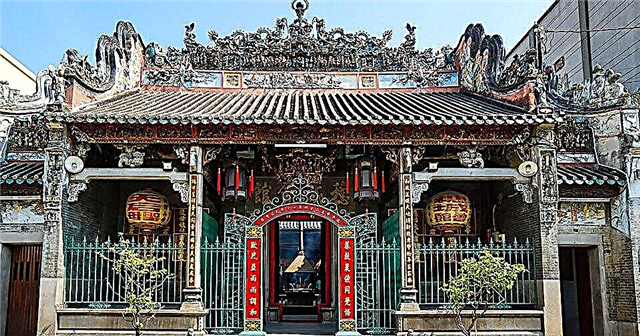
The pagoda is located in the Chinese district of the city. It was built by immigrants from China in gratitude for the fact that the goddess Thien Hau helped them get by sea to their new place of residence. At the same time, building materials were delivered from China too. Thien Hau patronizes fishermen and sailors. Those who go on a long journey come to the temple and leave offerings in the form of spiraling fragrant incense. The garland is hung from the ceiling and set on fire.
As long as the spiral is burning, Thien Hau protects people with his prayers. The temple is visually different from the traditional pagodas: this is the Chinese culture.The interiors are decorated with panels and carved wooden details. Thien Hau next to the altar is guarded by her companions (sometimes they are considered demons). And a boat made of wood is attached to the ceiling to remind who the goddess is praying for.
War Victims Museum

This popular complex was not organized immediately:
- The prototype of the modern center was a small exhibition created in honor of the 15th anniversary of the Vietnamese army. Several old Saigon houses were enough to house the artifacts.
- But in 1965, the city was occupied by American troops, and instead of the recently created exhibition, the building was taken over by the military information service.
- Vietnam gained independence in 1975. The selected buildings were returned to the center, but now the focus of the exposition has changed. Here they began to exhibit evidence of the cruelty of the occupation forces and the thoughtless, barbaric destruction of civilians, causing damage to the environment. The exhibit has been called the Home for Displaying the War Crimes of American Imperialism.
- In 1990, the political situation in the world changed. The authorities changed the name of the exhibition. The center was now called the Museum of American War Crimes.
- 1995 brought a lot of new things. First of all, this is the warming of relations between the United States and the East Asian country. And the exposition received a new name: now the center is called the Museum of War Victims.
- The year 2002 became significant in the history of the complex: a modern building was built with budget money, the latest equipment was purchased.
Today, the administration of the center considers it most important to show visitors how terrible and dangerous for life on the planet any war. More than 2000 people visit the exposition every day. For the convenience of guests, the artifacts are provided with information plates in Vietnamese, English and Japanese.
Museum of Fine Arts
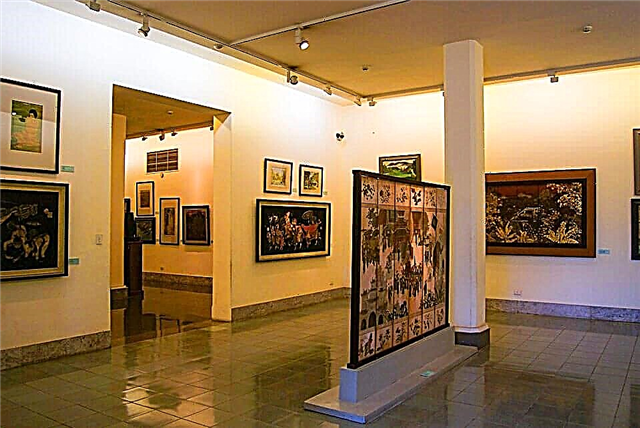
The building is a typical building from colonial times. Initially, the house was conceived as a residential building: the customer was a wealthy merchant from China. He made a fortune under the rule of France. The rich man wished his family to live in a house of European architecture. But he could not completely abandon national traditions: inside there are numerous staircases and passages, the courtyard is made according to Feng Shui.
In 1987, the city authorities decided to organize an exhibition where you can see the works of local and world artists and sculptors. The collection was collected gradually, but today it is the second center for the number of artifacts.
Visitors are invited to see:
- archaeological finds (the oldest date back to the 1st century)
- dishes, jewelry, household items of the early time
- lacquer painting
- woodcut
- silkscreen
- ceramics
- Buddhist art
All artifacts are unusual and therefore extremely interesting. And for those who want to buy souvenirs or a painting, a gallery has been created on the 1st floor. Here you can buy your favorite piece of modern art.
Museum of Traditional Vietnamese Medicine

The 15th century was rather difficult for the country: the country was occupied by China. But it was at this time that Vietnamese medicine acquired the features of Chinese. It is this (combined) medicine that is the theme of the exposition in the center. This is a private exhibition.
The creators did everything possible to immerse guests in that distant era as much as possible:
- windows, doors were brought from Hanoi, they used to be in the doctor's house
- sacred animals (unicorns, dragons) are placed on the roof, helping in the treatment
- railings, stairs are made of artificially aged wood
- bunches of fragrant herbs are hung in the halls
The history of medicine is depicted in the pictures. For a complete experience, guests can visit the medieval operating room and pharmacy. Old recipes, medicines and storage containers are exhibited here.
Ben Thanh Market

In the 17th century, there was a spontaneous oriental bazaar on this place. And Ben Thanh received official status in 1859. But the buildings quickly deteriorated, so a large-scale reconstruction was required. In 1914, the market opened already renovated. Today it is one of the peculiarities of the city: almost all tourists come here. What for? Just because. See, imbued with the spirit of the East, bargain.
And the fact of purchase is secondary here, although you can buy everything:
- spice
- ceramics
- medicinal herbs
- electronics
- vegetables and fruits
- interior items
- bamboo and reed mats
- jewelry
- products of famous brands
Hungry tourists can grab a bite to eat at one of the small cafes located between the merchants' shops. Both Asian and European dishes are offered. By the way, if you really want to buy something, but bargaining is unpleasant, you should look for a store with a similar product, where there is a sign: Fixed Price. The goods in it cost as much as indicated on the price tag.
Tang Dinh Church

Another legacy of the French colonialists. The church is built in the Gothic style. Unusually, it is painted a hot pink. And the graceful white stucco molding makes the temple unforgettable. The bell tower has 5 bells of different sizes. Their total weight is more than 5 tons. And the central tower is decorated with a large clock. Numerous sharp turrets add grace to the building.
In the courtyard, there are sculptural compositions depicting Jesus Christ and biblical subjects. Light penetrates inside through colored stained-glass windows. On the walls, in addition to the faces of the saints, are depicted stars with 5 rays (symbols of Vietnam). In 2016, the authorities closed the temple for restoration. The result was a change in the color of the walls from the original hot pink to snow white. This greatly upset the parishioners and tourists.
Temple of Mariamman

This Hindu temple was built relatively recently: at the end of the 19th century. But it is the most visited among other similar temples in the country. The initiator of its construction was the Tamil community, who settled in the suburbs of the then Saigon. They also raised money for the construction. And today the members of the community are the main parishioners of Mariamman. But Vietnamese Buddhists who recognize this religion also visit the temple.
There are always a lot of tourists in Mariamman. There are several reasons:
- the temple is beautiful and in excellent condition
- its architecture and interiors are very different from Buddhist
- anyone entering the temple is forever healed of disease
The altar contains a sculpture of Mariamman. The goddess has many hands. She is surrounded by servants: Ganesha and goddesses of lower rank. Incense is constantly smoked around the altar.
Saigon river

A huge amount of cargo is transported along the Saigon River. But tourists appreciate it for something else: while sailing on a motor ship or boat, you can see the whole of Ho Chi Minh City in a short time. Within the city limits, several tributaries flow into Saigon, and people supplemented it with canals. Therefore, a trip by water will allow you to see not only the center, but also inaccessible outskirts.
The city is especially unusual at dusk, when the lights are on. Then the shores take on a fantastic view: parks and squares alternate with skyscrapers and pagodas, and all this is illuminated by colored lanterns. Tour operators offer many excursions along the river. Some take a whole day, others take several hours. But the guests of the city are unanimous: it is worth making time to see Ho Chi Minh City from an unexpected perspective.

